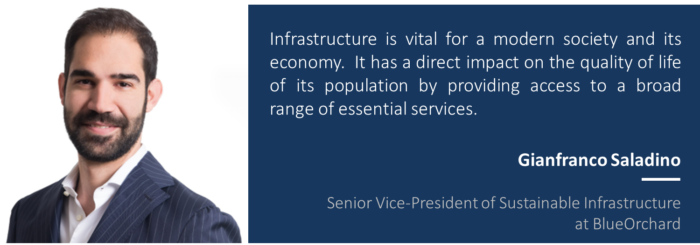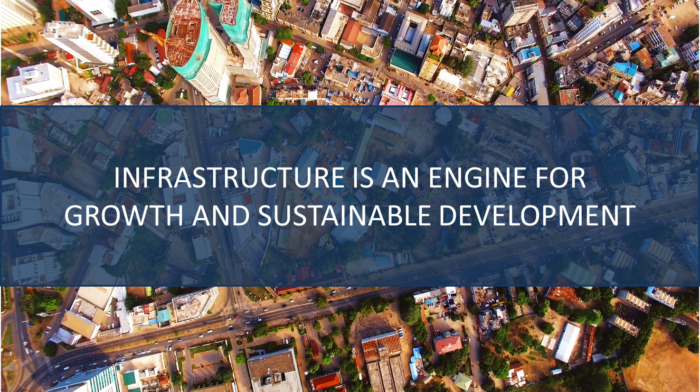In order to gain a better understanding of how impact investing can promote the development of sustainable infrastructure in emerging and frontier markets, we have interviewed our Senior Vice-President of Sustainable Infrastructure, Gianfranco Saladino.

Gianfranco, what is sustainable infrastructure and why is it critical to economic development and our environment?
Gianfranco: Infrastructure is vital for a modern society and its economy. It has a direct impact on the quality of life of its population by providing access to a broad range of essential services (e.g. electricity, water, telecommunication and transport). Sustainable infrastructure typically refers to infrastructure projects that are designed, constructed and operated in a way to ensure economic, financial, social, environmental and institutional sustainability over the project’s lifecycle. Sustainable infrastructure not only enables economic growth but it also improves the quality of life of people, protects our vital natural resources and environment, and encourages a more effective and efficient use of financial resources. In the long run, sustainable infrastructure is not only good for the broader community but also supports investors’ financial returns.
What is the demand for sustainable infrastructure globally?
Gianfranco: According to Global Infrastructure Hub a global infrastructure gap of USD 15 trillion is forecast by 2040, representing 16% of total infrastructure investment needs. The Americas and Africa are forecast to have the largest infrastructure gaps, at 32% and 28% of their needs respectively. Taking into account the UN Sustainable Development Goals (SDGs) for universal access to drinking water, sanitation and electricity the gap increases by an additional USD 3.5 trillion.
How can impact and ESG criteria help manage risks and improve financial returns for infrastructure projects in general?
Gianfranco: As an illiquid and long-term focused asset class, infrastructure assets are especially vulnerable to long-term sustainability risks (e.g. climate impacts, shifts in environmental regulations, and changes to consumer health and safety regulations). Infrastructure investments are also causing externalities, such as carbon emissions or environmental degradation, which are borne by the public, but are often unaccounted for on project level. Albeit difficult to quantify upfront, these risks can have a material impact on the financial performance of the asset over its life-cycle. A thorough ESG risk assessment as part of a due diligence exercise helps identifying and managing inherent ESG related risks and contributes to preserve the value of an asset over its life-cycle. A strong ESG framework will not only reduce operating and financial risks during an infrastructure asset’s hold period – it will also have a positive impact on its exit value.
Traditionally, infrastructure investments have been dominated by the public sector. Why are private investors increasingly participating in the sector and why is their participation critical?
Gianfranco: Governments have historically planned, regulated, and financed the majority of infrastructure off their own balance sheets—whether directly through national development banks or indirectly through state-controlled utilities. Recent fiscal constraints and a pressure to deleverage public sector balance sheets are placing greater emphasis on the role of the private sector in providing infrastructure services. In addition to reducing the fiscal burden of public budgets, more private sector involvement may enhance performance and increase efficiency of infrastructure services. Private investors value infrastructure assets’ lower correlation to economic cycles compared with other sectors as well as their stable and relatively predictable cash flows which often come along with an element of cash yield as well as inherent inflation protection. Sustainable infrastructure adds a positive environmental and social impact to the asset class’ key attractions.
Why are blended finance vehicles a promising tool to scale up investments?
Gianfranco: Blended finance offers a wide range of de-risking instruments to unlock commercial capital, mitigate the perceived risks, and ultimately accelerate and scale-up impact initiatives that contribute to the achievement of the SDGs. Blended finance initiatives have the ability to leverage the strengths and expertise of the private and public sectors and therefore represent a key financing mechanism to catalyze investments towards the SDGs.
Thank you, Gianfranco, for answering our questions.
